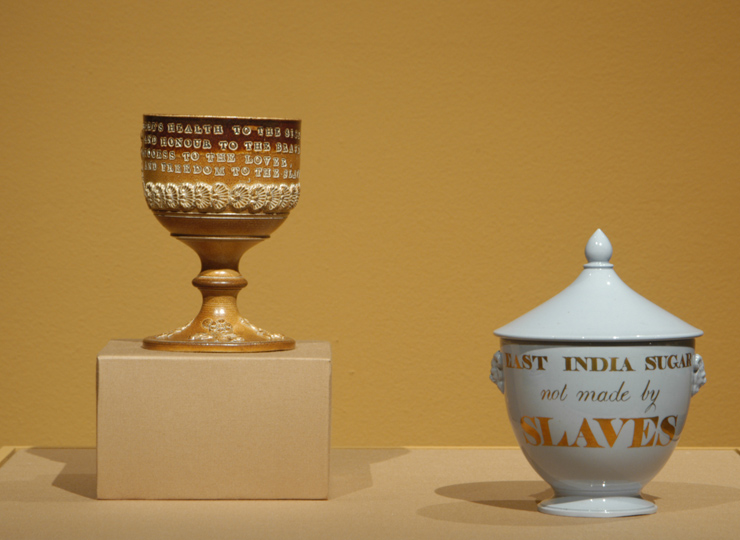Chalice, 1830-50
England
Soft paste porcelain
Lent by Rex Stark
These two ceramics made for the abolitionist market make their point through
words rather than pictures. The blue sugar bowl implicitly advocates the boycott
of slave-produced sugar from the West Indies (or Caribbean Islands) by announcing
its contents to be imported from the East Indies (Asia). The bowl may even
have been made by the British East India Company itself, in an early example
of politically expedient advertising. Ironically, the company relied for its
sugar supply on overworked Indian laborers, whose living conditions were only
somewhat better than those of the Caribbean slaves.
Sugar also lay at the heart of Toussaint L’Ouverture’s story. During
the Haitian revolution most of the island’s plantations were destroyed
in what one observer described as "a rain of fire composed of burning
cane straw." But after the revolt Toussaint worked hard to restore the
profitable industry of sugar production as a means of supporting his new independent
government.
Sugar bowl, c. 1820
Staffordshire, England
Earthenware with blue glaze and gilding
Lent by the Chipstone Foundation
